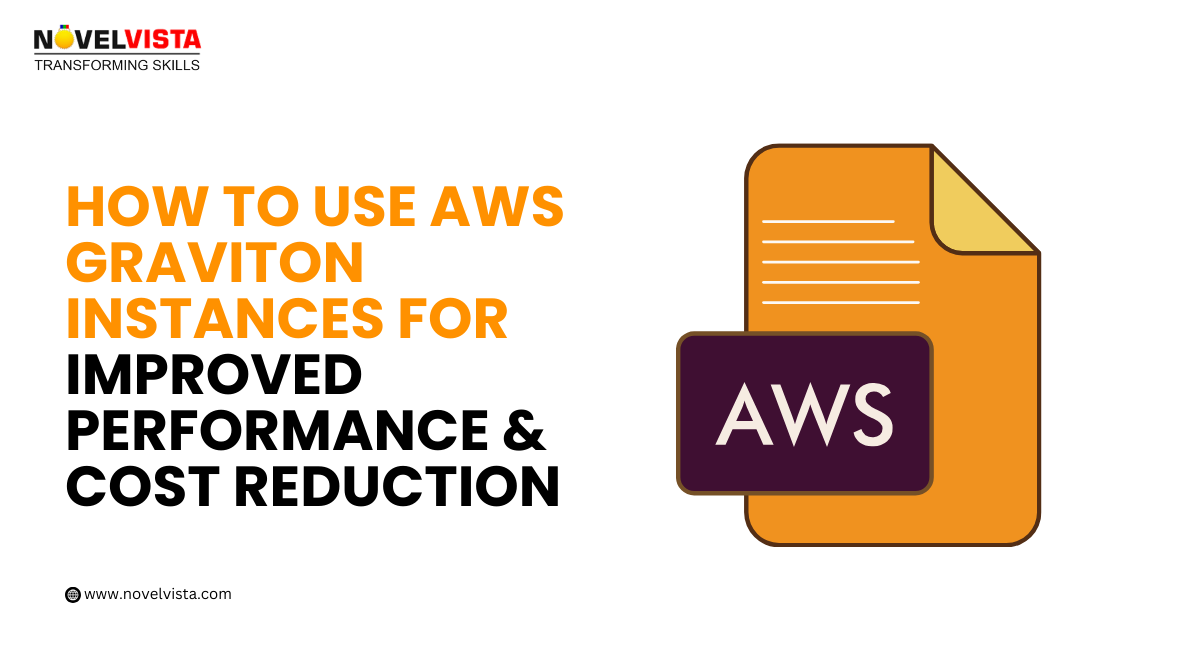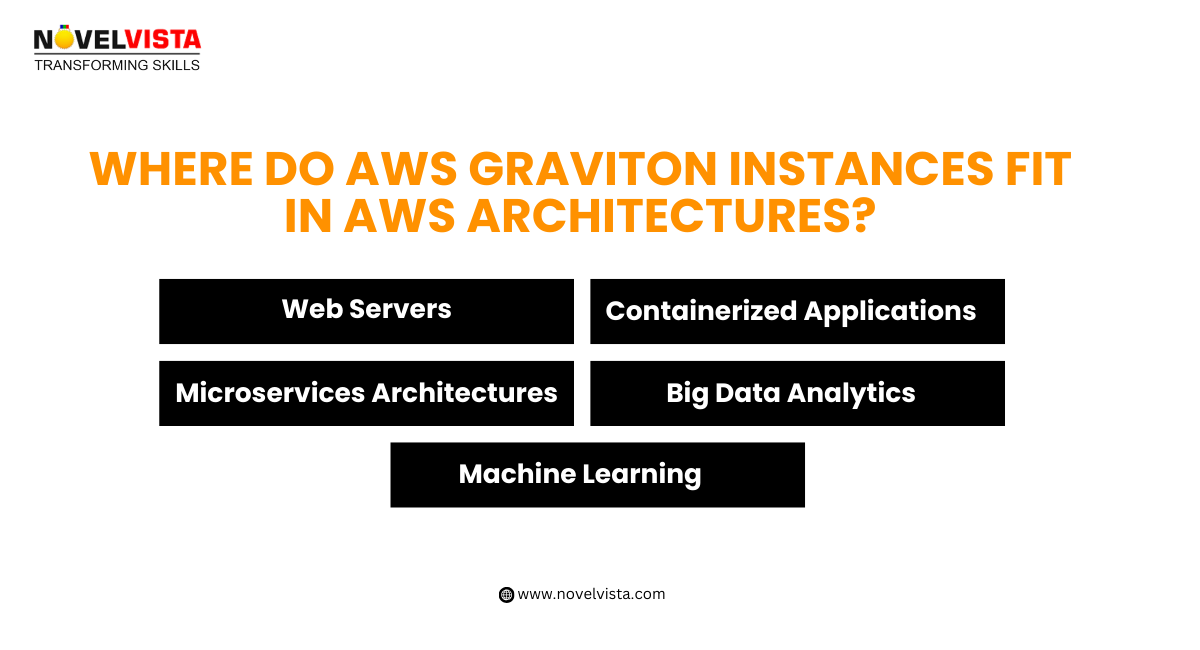As cloud infrastructure continues to mature, AWS Graviton instances have emerged as a capable and powerful solution for enhancing performance and lowering cloud expenditures. AWS Graviton processors, built by AWS based on Arm architecture, deliver high gains in performance, scalability, and price-to-performance ratios, especially for workloads that can take advantage of parallel computing. By using the correct instance type and adequately optimizing workloads, companies can realize considerable cost savings while enhancing overall performance.

AWS Graviton instances are ideal for a large number of use cases and sectors, and anybody interested in streamlining their AWS workloads will benefit. The key users are:
Cloud Architects: Cloud architects designing scalable, cost-effective cloud infrastructure can benefit from Graviton instances because of their cost-to-performance ratio.
DevOps Engineers: DevOps teams tasked with automating infrastructure management and scaling applications will find Graviton instances to be a great choice for improving workload efficiency and reducing cost.
Developers: Application developers developing applications that demand high-compute speed can use Graviton instances to speed up and cut down on operational overhead.
Enterprise IT Teams: Organizations seeking to reduce cloud computing expenditure without compromising on performance can employ Graviton instances to improve their AWS infrastructure.
Example:
A software organization with microservices deployed on AWS can implement Graviton instances for backend operations, leading to improved computation and lower operational expense with the same high performance.
AWS Graviton instances are powered by AWS Graviton processors, which are custom-built Arm-based processors designed by AWS. They are designed for cloud-native workloads and applications and provide improved price-to-performance ratios over traditional x86-based instances (e.g., Intel and AMD processors).
Graviton instances are provided in different EC2 instance families, such as M6g, C6g, R6g, T4g, and others, helping compute-intensive, memory-intensive, and general-purpose workloads.
Key Features of Graviton Instances:
Affordable: Graviton instances provide up to 40% more price per performance compared with similar x86-based instances.
Flexible for cloud-native workloads: Perfect for web servers, container applications, microservices, and data observing.
Energy efficiency: Graviton processors are optimized for energy efficiency, minimizing power usage versus standard processors.
Boosted performance: Graviton instances provide enhanced performance for applications that take advantage of parallel processing, including machine learning, high-performance computing (HPC), and scientific simulations.
A game company might take up Graviton instances for their backend game servers, saving them money while enhancing responsiveness and lowering latency for players globally.
AWS Graviton instances should be used when:
You are seeking cost savings: Graviton instances offer substantial savings, particularly for workloads well-suited to parallel processing. This is perfect for workloads with high computational requirements, such as web servers, data processing, and machine learning workloads.
You require high-performance computing: If your workloads are compute-intensive and can be executed in parallel (such as big data analytics, machine learning, and scientific workloads), Graviton instances offer better performance at a lower price.
You have cloud-native applications: If your applications are microservices-based or containerized workloads, Graviton instances can be extremely effective because their ARM-based architecture can execute such workloads more efficiently.
You need to use ARM architecture: ARM architecture is designed for low power usage and parallel processing. If your applications are able to leverage this, Graviton instances are a great option.
Example:
A bank performing sophisticated, real-time analytics and high data processing operations on AWS can migrate to Graviton instances to get improved performance for financial modeling and forecasting while reducing costs.

Graviton instances are a natural fit for different components of AWS system, especially where cost and performance are primary concern. Some of the places where Graviton instances are most suitable are:
Web Servers: Helping high-traffic websites or web applications with enhanced performance and cost savings.
Containerized Applications: Best suited for workloads running in containers (e.g., with Amazon ECS or EKS) where parallel processing is desirable.
Microservices Architectures: Ideal for microservices deployments where scalability and efficiency are needed.
Big Data Analytics: Graviton instances can speed up data processing workloads, which makes them ideal for big data and analytics workloads.
Machine Learning: Graviton instances are ideal for machine learning inference workloads, offering the compute resources necessary for predictions and analysis at scale.
Example
A big e-commerce site can scale Graviton instances to service their dynamic product inventory and handling of customer request processing, resulting in improved load times and enhanced customer experience.
There are a lot of strong reasons you should use AWS Graviton instances:
Cost Savings: Graviton instances provide up to 40% better price/performance compared to x86-based instances. It is especially helpful for high-traffic workloads which can take advantage of parallel processing.
Performance Enhancements: AWS Graviton instances provide better performance for applications utilizing the parallel processing feature of Arm architecture. This results in enhanced processing and minimized latency, particularly in compute-bound applications.
Energy Efficiency: Graviton instances are made energy-efficient, enabling lower operating expenses and more eco-friendly cloud usage.
Cloud-Native Workloads: As there is an increasing emphasis on cloud-native applications, AWS Graviton instances are ideally suited for containers, microservices, and other cloud-native workloads that can leverage the strengths of ARM architecture.
Example:
A media organization with high-scale video streaming requirements can implement Graviton instances to minimize operational expenses while ensuring a smooth experience for users, all while maximizing energy efficiency.
To effectively use AWS Graviton instances within your AWS environment, use the following best practices:
Step 1: Evaluate Your Workload Needs
Prior to making the transition to Graviton instances, evaluate whether your workloads will take advantage of the performance and cost savings provided by the ARM architecture. Graviton instances are optimally suited for compute-intensive workloads that can take advantage of parallel processing.
Example:
If you are executing a big data processing task for scientific purposes, evaluate whether your load is parallelizable and will reap the benefits of the ARM architecture. If this is the case, use Graviton instances for improved performance and cost.
Step 2: Select the Appropriate Graviton Instance Type
AWS provides a varieties of Graviton instance types based on your workload needs:
M6g Instances: General-purpose instances for use cases like small and medium-sized databases, caching fleets, and web servers.
C6g Instances: Compute-optimized instances best suited for applications that need high compute capacity, such as batch processing, video encoding, and scientific modeling.
R6g Instances: Memory-optimized instances best suited for workloads like high-performance databases and in-memory caches.
T4g Instances: Burstable performance instances best suited for cost-conscious applications like small to medium-sized web servers and development environments.
Example:
A startup building a suggestion engine for their e-commerce website might choose C6g instances for their high computing power and cost savings, as they can benefit from Graviton’s high performance.
Step 3: Move Your Workloads to Graviton
Once you’ve analyzed the possibility, transfer your workloads to Graviton instances. Use AWS Migration Hub to track your progress, and consider AWS Application Migration Service for lift-and-shift migrations.
Containerization: If your workloads are containerized, you can directly migrate your containers to Graviton instances with ease using Amazon ECS or Amazon EKS.
Testing: Testing the performance of your workloads on Graviton instances before complete commitment is a good idea. Monitor metrics and confirm the performance improvement using AWS CloudWatch.
Example:
A data analytics firm leveraging AWS Lambda for processing incoming streams of data may transition to Lambda functions based on Graviton to enhance the processing time and save costs.
Step 4: Monitor and Optimize
After your workloads are already running on Graviton instances, utilize AWS Cost Explorer to monitor savings and performance gains. In addition, use AWS CloudWatch to monitor performance metrics and adjust resources.
Example:
A SaaS company hosting Graviton instances for web services could utilize Auto Scaling to manage high demands in peak business hours and downscale when traffic is low.
Use Case 1: Cost Optimization for a Media Streaming Platform
Problem: A media streaming service is paying through the nose to operate, providing video content, with millions of users streaming videos concurrently.
Solution: The company moves video transcoding and content delivery to C6g instances for their compute-optimized performance, lowering transcoding times and reducing the compute costs by leveraging Spot Instances where possible.
Outcome: The platform lowers its overall infrastructure expenses by as much as 30%, while still providing high-quality video delivery and increasing processing speed.
Use Case 2: High-Performance Analytics for a Research Institute
Problem: A research institute runs large data sets of genome sequencing and scientific simulations. The organization needs high computing power but has to remain within budget.
Solution: The institute shifts its data processing workloads into R6g instances to leverage the parallel processing power of the Graviton architecture. They also leverage Auto Scaling to manage peak processing hours without overprovisioning.
Outcome: The institute experiences improved processing performance and cost reduction by 40% as against conventional x86-based instances.
AWS Graviton instances are a great choice for companies that want to enhance performance and lower cloud expenses. By utilizing the high-performance and cost-effective features of Graviton, companies can maximize their workloads and attain better price-to-performance ratios. With proper planning, monitoring, and deployment, you can maximize Graviton instances in your cloud environment.
Ready to use AWS Graviton instances for your applications? Reach out to us today for a customized consultation to begin your cloud cost optimization process!
Confused about our certifications?
Let Our Advisor Guide You